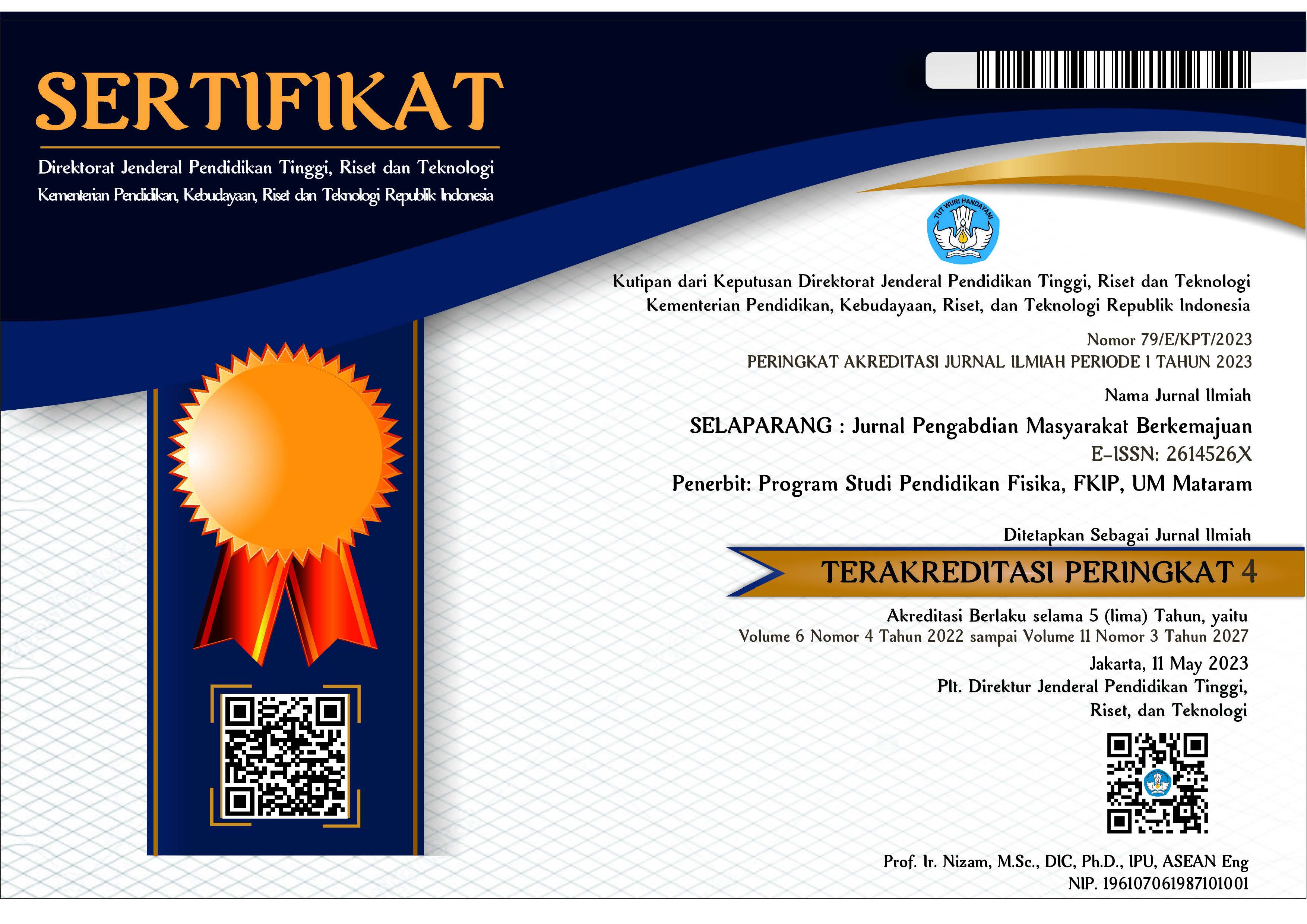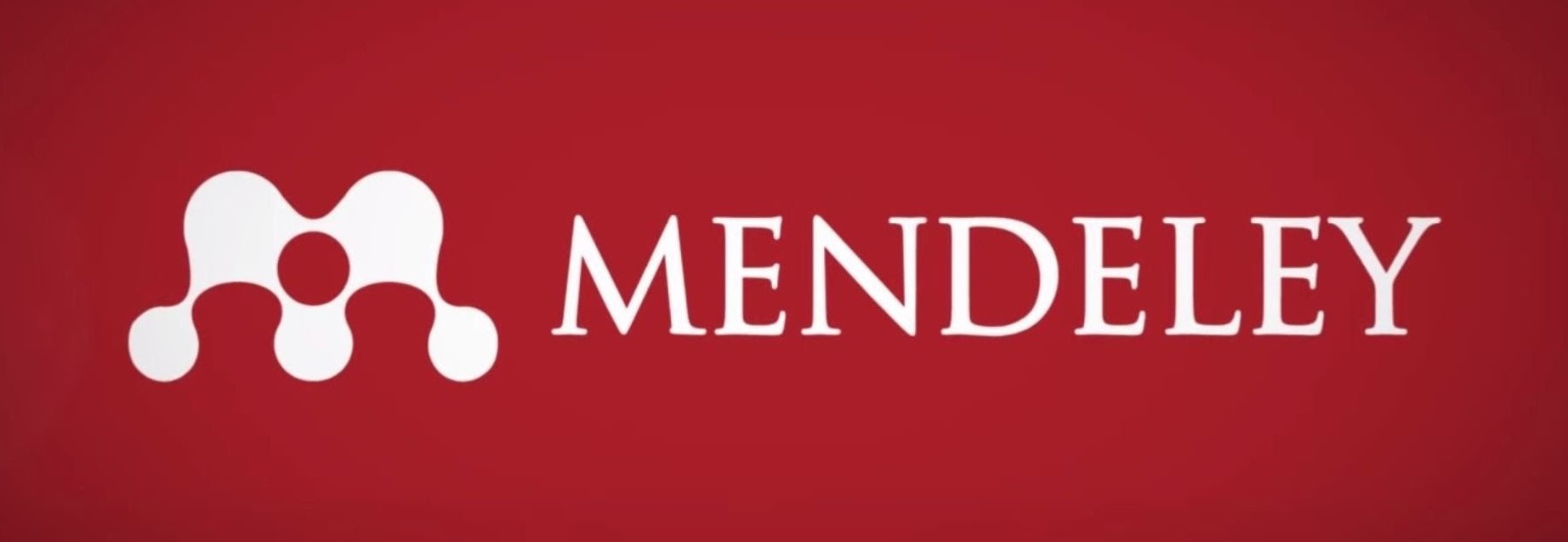BERGIZI BERKAH (PEMBERDAYAAN GIZI BERBASIS SEKOLAH): SEBUAH PROGRAM PEER MODELLING, REWARD DAN REPEATED
Abstract
ABSTRAK
Konsumsi sayur dan buah pada remaja dan anak-anak kurang dari rekomendasi yang dianjurkan karena salah satunya adalah neofobia terhadap kelompok bahan makanan tersebut. Anak sekolah dasar sebagai mitra pengabdian ini merupakan kelompok yang juga tidak terlepas dari masalah tersebut, padahal manfaat sayur dan buah bagi imunitas sangat penting terutama setelah masa pandemi . Tujuan gagasan program pengabdian ini adalah mengurangi neofobia dan meningkatkan kesukaan terhadap sayur dan buah antara kelompok anak-anak sasaran. Metode pengabdian ini menggunakan strategi peer modeling, reward dan repeated. Tahapan peer-modeling dilakukan dengan cara mendongeng, repeat (paparan) dengan cara memberikan hidangan sayur dan buah, dan reward dengan cara memberikan hadiah. Tahapan tersebut dilakukan selama lima hari berturut-turut. Sasaran kegiatan adalah anak sekolah dasar usia 7-9 tahun di SD Negeri 21 Pangkalpinang sebanyak 17 orang dan SD Negeri 4 Pangkalan Baru sebanyak 21 orang. Tahapan peer modelling dengan cara mendongeng berhasil mengurangi neofobia sasaran di SDN 21 Pangkalpinang (52,9%), dibandingkan sasaran di SDN 04 Pangkalan Baru (55,0%). Tahapan repeated menempatkan sayur urap (75,7%) dan pisang (75,7%) sebagai hidangan yang paling disukai. Peningkatan kesukaan akan hidangan terjadi dengan presentase anak yang mendapatkan reward sebesar 27,1%. Program pemberdayaan ini mempunyai potensi untuk direplikasi di lokasi berbeda dengan penyesuaian rentang waktu program dan integrasi dengan program kantin sekolah.
Kata kunci: pemberdayaan gizi; konsumsi; sayur; buah.
ABSTRACT
Consumption of vegetables and fruit in adolescents and children is less than the recommended recommendations because one of them is neophobia towards these food groups. Elementary school children as service partners are a group that is also inseparable from this problem, even though the benefits of vegetables and fruit for immunity are significant, especially after the pandemic. This service program aimed to reduce neophobia and increase the target children's preference for vegetables and fruit. This dedication method uses peer modelling, reward and repeated strategies. The peer-modelling stage is carried out by storytelling, repeat (exposure) by giving vegetable and fruit dishes, and rewards by giving gifts. These stages were carried out for five consecutive days. The target of the activity is elementary school children aged 7-9 years at SD Negeri 21 Pangkalpinang with a total of 17 people and SD Negeri 4 Pangkalan Baru with 21 people. The peer modelling stage using storytelling reduced the neophobia of the target at SDN 21 Pangkalpinang (52.9%) compared to the target at SDN 04 Pangkalan Baru (55.0%). The repeated stages placed the urap vegetables (75.7%) and bananas (75.7%) as the preferred dishes. The preference for the dish increased with the percentage of children who received a reward of 27.1%. This empowerment program has the potential to be replicated in different locations by adjusting the program timeframe and integrating it with the school canteen program.
Keywords: nutrition empowerment; consumption; vegetable; fruit.
Keywords
Full Text:
PDFReferences
Anggraeni, A. S., Sukartini, T., & Kristiawati, K. (2017). Consumption of fruit and vegetable with risk of obesity in school-age children. Jurnal Ners, 12(1). https://doi.org/10.20473/jn.v12i1.3448
Appleton, K. M., Dinnella, C., Spinelli, S., Morizet, D., Saulais, L., Hemingway, A., Monteleone, E., Depezay, L., Perez-Cueto, F. J. A., & Hartwell, H. (2019). Liking and consumption of vegetables with more appealing and less appealing sensory properties: Associations with attitudes, food neophobia and food choice motivations in European adolescents. Food Quality and Preference, 75, 179–186. https://doi.org/10.1016/J.FOODQUAL.2019.02.007
Balitbangkes Kemenkes RI. (2013). Riset Kesehatan Dasar: Riskesdas 2013. Balitbangkes Kemenkes RI.
Balitbangkes Kemenkes RI. (2018). Hasil Utama Riskesdas 2018.
De Lauzon-Guillain, B., Jones, L., Oliveira, A., Moschonis, G., Betoko, A., Lopes, C., Moreira, P., Manios, Y., Papadopoulos, N. G., Emmett, P., & Charles, M. A. (2013). The influence of early feeding practices on fruit and vegetable intake among preschool children in 4 European birth cohorts. American Journal of Clinical Nutrition, 98(3). https://doi.org/10.3945/ajcn.112.057026
Henley, K., Reeder, N., Persell, A., & Tolar-Peterson, T. (2021). Fruit and vegetable liking and intake among college students: a cross-sectional study. Journal of American College Health. https://doi.org/10.1080/07448481.2021.1947834
Heratama, N. R., Kusnandar, K., & Suminah, S. (2021). Vegetable and Fruits Consumption, Physical Activity, and Nutritional Status of Adolescents. Al-Sihah: The Public Health Science Journal, 13(2), 187. https://doi.org/10.24252/al-sihah.v13i2.23588
Kementerian Kesehatan. (2014). STUDI DIET TOTAL: SURVEI KONSUMSI MAKANAN INDIVIDU INDONESIA 2014 (Trihono, Atmarita, A. B. Jahari, & D. Kartono, Eds.; 1st ed.). Lembaga Penerbit Balitbangkes.
Laureati, M., Bergamaschi, V., & Pagliarini, E. (2014a). School-based intervention with children. Peer-modeling, reward and repeated exposure reduce food neophobia and increase liking of fruits and vegetables. Appetite, 83, 26–32. https://doi.org/10.1016/J.APPET.2014.07.031
Laureati, M., Bergamaschi, V., & Pagliarini, E. (2014b). School-based intervention with children. Peer-modeling, reward and repeated exposure reduce food neophobia and increase liking of fruits and vegetables. Appetite, 83, 26–32. https://doi.org/10.1016/j.appet.2014.07.031
Liem, D. G., & Russell, C. G. (2019). The Influence of Taste Liking on the Consumption of Nutrient Rich and Nutrient Poor Foods. In Frontiers in Nutrition (Vol. 6). Frontiers Media S.A. https://doi.org/10.3389/fnut.2019.00174
Lowe, C. F., Horne, P. J., Tapper, K., Bowdery, M., & Egerton, C. (2004). Effects of a peer modelling and rewards-based intervention ot increase fruit vegetable consumption in children. European Journal of Clinical Nutrition, 58(3), 510–522. https://doi.org/10.1038/sj.ejcn.1601838
Nasution, A. S., Rustam, M. Z., Luthfi, F., Novziransyah, N., Pratama, M. Y., Syurandhari, D. H., & Gurning, F. P. (2021). Efforts to Prevent COVID-19 by Applying Physical Distancing, Handwashing Behavior and Vegetable Fruit Consumption Patterns in Indonesia. Indian Journal of Forensic Medicine & Toxicology. https://doi.org/10.37506/ijfmt.v15i3.15588
Widani, N. L. (2019). Penyuluhan Pentingnya Konsumsi Buah dan Sayur pada Remaja di Sos Desataruna Jakarta. PATRIA, 1(1). https://doi.org/10.24167/patria.v1i1.1779
World Health Organization. (2013). Vienna Declaration on Nutrition and Noncommunicable Diseases in the Context of Health 2020. World Health Organization. https://www.euro.who.int/en/health-topics/disease-prevention/nutrition/activities/who-european-childhood-obesity-surveillance-initiative-cosi/cosi-publications/vienna-declaration-on-nutrition-and-noncommunicable-diseases-in-the-context-of-health-2020-2013
DOI: https://doi.org/10.31764/jpmb.v7i3.15140
Refbacks
- There are currently no refbacks.

This work is licensed under a Creative Commons Attribution-ShareAlike 4.0 International License.
______________________________________________________
Jurnal Selaparang
p-ISSN 2614-5251 || e-ISSN 2614-526X
EDITORIAL OFFICE:



















